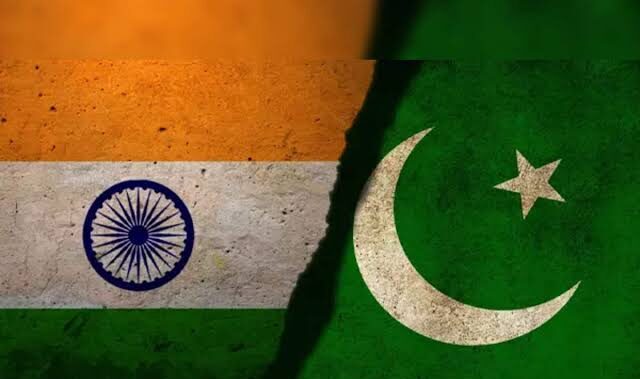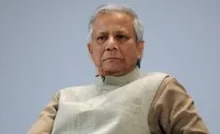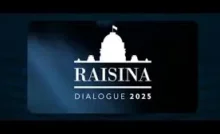The Indus River is one of the largest river basins. It is also known as Sindhu. It originates from a glacier near Bokhar Chu in the Tibetan region at an altitude of 4,164 m in the Kailash Mountain range near the Mansarovar Lake. The river flows through China (Tibet region), India, and Pakistan.
The (Indus Water Treaty) IWT was brokered between India and Pakistan by the World Bank in 1960 and outlines how the two countries will utilize the waters of the six rivers of the shared Indus River system. While the western rivers of the system — Indus, Jhelum, and Chenab fall in Pakistan’s share, the three eastern ones — Ravi, Beas, and Sutlej — are to be used by India.
This treaty had a lot of ambiguities that needed to be removed. Therefore, a committee headed by Pankaj Kumar, secretary, Department of Water Resources, River Development and Ganga Rejuvenation, was set up in June 2023 to review the IWT. This committee, which also has representatives from the MEA’s Legal and Treaties Division and Central Water Commission (CWC), is currently examining the treaty provisions. Prior to setting up the committee, CWC Chairman Kushvinder Vohra was tasked to review the treaty and submit a report. This report was submitted in June to the department of water resources. The committee had recommended deletion and modification of several clauses of the 1960 treaty that were described as no longer relevant. The Pankaj Kumar committee is also closely looking at the dispute resolution mechanism in the treaty. There is a strong view against the involvement of a third party, which in this case is the World Bank in dispute resolution. The way the dispute resolution mechanism is structured makes the treaty unworkable.
According to the graded mechanism for resolution outlined in the treaty, when an issue arises, it is first taken to the Permanent Indus Commission (PIC), comprising two commissioners — one each from India and Pakistan. If the PIC is unable to resolve the difference, then either party can take it to a neutral expert. If both the commissioners agree that the dispute requires the interpretation of the IWT, then it goes to the Permanent Court of Arbitration (CoA). The treaty states that a matter can go to the CoA under two conditions — if both the commissioners of the Permanent Indus Commission agree that the issue is legal in nature, or the neutral expert refers the matter to the CoA.
But surprisingly, CoA in the Hague issued a statement that it has the “competence” to consider matters concerning the construction of Kishenganga and Ratle hydroelectric projects in Jammu and Kashmir. In the present case, both the options as mentioned were not followed, and Pakistan unilaterally dragged India to the CoA. That is why, government officials said, India has held that the unilateral action by Pakistan is in contravention of Article IX of IWT that spells out the graded mechanism of dispute resolution. India has toughened its stand that it “will not accept any ruling” given by the CoA as it is illegal. The Indian government is now firm that it wants to renegotiate the treaty. Pakistan has objected to the construction of the two projects on the ground that it violates the provisions of the Indus Waters Treaty (IWT). But the Indian government firmly asserted that the construction of the dam was within the established norms of the treaty.
India has held that the constitution of the CoA — set up by the World Bank on the request of Pakistan in October last year — is in contravention of the provisions of the Indus Waters Treaty and has refused to participate in its proceedings. A senior government official informed that “We hold the constitution of CoA as illegal and will not accept any decision given by it. At the same time, we are seriously working towards modifying the treaty.” Following the CoA’s statement, on July 6, the Ministry of External Affairs (MEA) also issued a release saying that India cannot be compelled to recognise or participate in illegal and parallel proceedings not envisaged by the IWT.
India had communicated to Pakistan also for holding talks to modify the treaty under Article XII (3) of the IWT. In June this year; India had sent a note verbale to Pakistan seeking a meeting of the water resources secretaries of the two countries to discuss the issue. India also proposed a date — 15 July for the meeting. But unfortunately, Pakistan has not responded yet to India’s communication. Earlier on 25 January this year, India had first sent a notice to Pakistan to renegotiate the treaty.
Surprisingly, in 1960 India was so generous that it entered into this Treaty. It gave 80 % of the water of the western rivers, that is Indus, Jhelum and Chenab and got only 20% of the share of the water.According to the treaty, India can use the water from the western rivers for domestic, non-consumptive needs such as storage, irrigation, and the generation of electricity. This 20% water from Indus River is not sufficient for the irrigation in Ladakh area. Had India got more share of water then more area of Ladakh could have been turned into greenery .Shockingly, India also paid GB£62,060,000as grant for the construction of canals and storage facilities that would transfer water from the western rivers to Pakistan.
India got control over the three eastern rivers, which are Ravi, Beas and Sutlej.All the waters of the Eastern Rivers shall be available for the unrestricted use of India until the arise of any unwanted situation. But probably former PM Nehru forgot that ultimately the water of these rivers flow into Pakistan. Therefore, India was at overall loss.
First of all, India should have not entered into this Treaty with a country that had invaded India immediately after the Independence. But if at all it had to sign such a treaty then it should have bargained for the Pakistan Occupied Kashmir (POK) which Pakistan has illegally occupied. Why give water to the country that always remains hostile towards India. There is a belief that Gagger River flows below the surface and enters in Pakistan from Anoopgarh area in Rajasthan. Notorious Pakistan has built a Bund just close to the Indo-Pak border to prevent any water that is released in Gagger River during monsoon from entering Pakistan. Thus, this area inside India near the Indo-Pak border gets flooded to a depth of 10 to 11 feet and even the villages nearby are under water creating lot of problem for BSF and the local administration. Therefore, India must remain firm for amending this Treaty, and no water should be allowed to enter Pakistan from at least the eastern rivers.
Now is time that India should dictate terms and conditions and not be generous.





